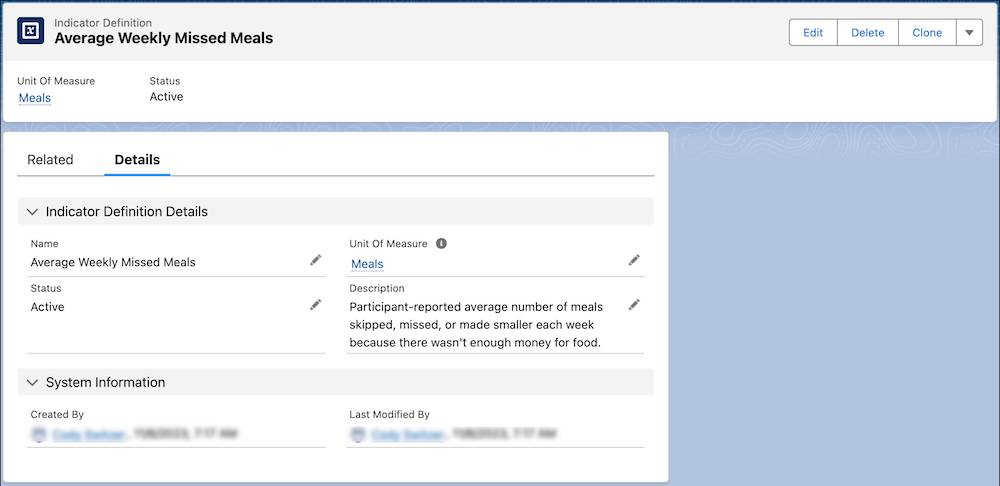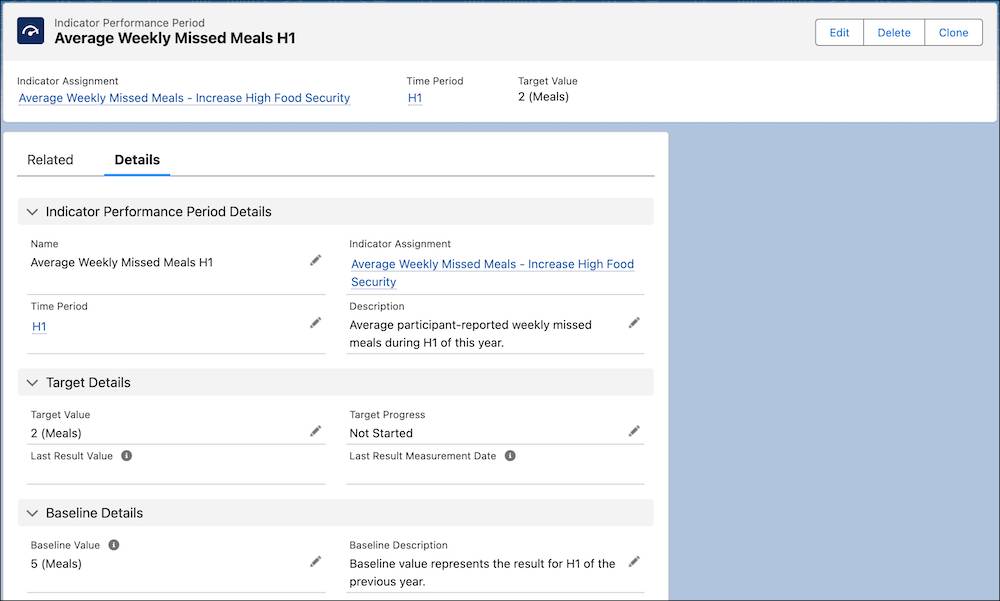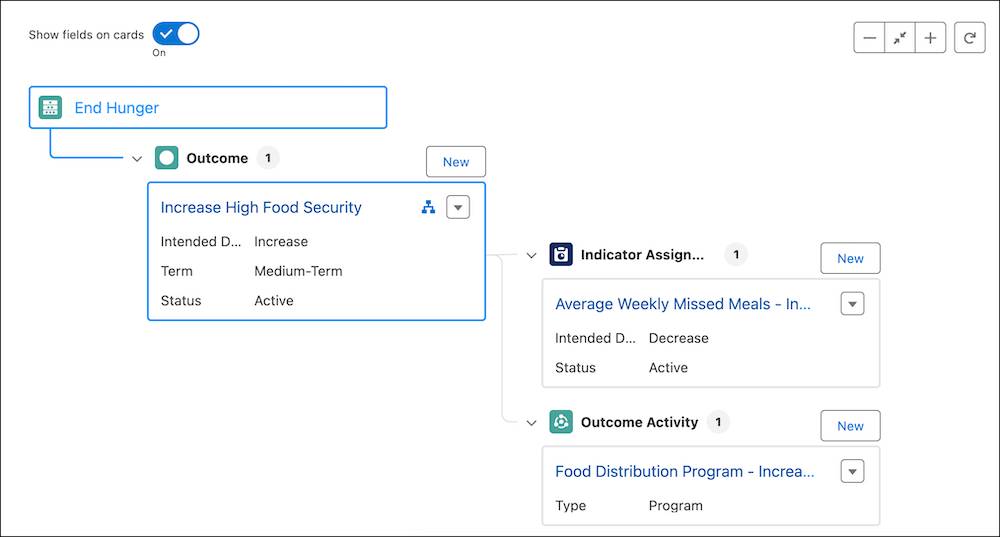Understand Outcome Management
Learning Objectives
After completing this unit, you’ll be able to:
- Explain how Outcome Management makes your outcome strategy actionable.
- Describe the key objects of Outcome Management.
Before You Start
Before you start this module, consider completing the following recommended content.
Track Your Work and Outcomes in a Single System
Improving the world is hard work—tracking those improvements can be harder.
From determining what to measure to collecting and analyzing results, social impact organizations like yours face challenges in measuring performance and outcomes. If that work is spread across multiple systems, the challenges can be even greater.
You have to overcome these challenges to achieve the most impact with limited resources. Plus, you must meet the expectations of donors, supporters, and other stakeholders who expect data about your work’s outcomes.
Fortunately, Nonprofit Cloud for Outcome Management streamlines the process and makes your strategy actionable. It helps social impact organizations define consistent indicators, set targets to ensure performance accountability, and analyze their results.
In this module, you learn the basics of Outcome Management and the objects it uses.
Tour Outcome Management
Outcome Management helps you:
- Set your outcome strategy, link it to your programs and services in Salesforce, and see all of the components of your outcome strategy in one place.
- Create and manage assessments to streamline the collection of outcomes data from program participants.
- Create reports on outcomes and share them with the communities you serve, your board, your donors, and other relevant stakeholders.
To better understand how Outcome Management works, check out this video.
Understand Key Objects
Outcome Management tracks your outcomes and results through a few key objects. Let’s explore them through two examples: a group working to reduce carbon emissions and a group working to reduce hunger.
Outcome represents the expected changes your organization’s activities produce for participants or stakeholders. For example, the environmental organization has an outcome to reduce carbon emissions and the hunger organization has an outcome to increase families’ food security.
Outcome Activity connects an outcome to the work you do. If you also use Nonprofit Cloud for Programs and Case Management, use an outcome activity to link an outcome to a related program, benefit, or goal definition. The example environmental organization has an activity to train local contractors on energy-efficient home remodeling practices, which it can link to its “reduce carbon emissions” outcome. The hunger organization has food distribution programs linked to its food security outcomes.
Indicator Definition provides a consistent, standard description of indicators, which are values that an organization measures. Indicators are used to measure the progress of either a long-term outcome or the short-term results of a program. For example, the environmental organization creates an indicator definition for graduation from its contractor training program. The hunger organization creates an indicator definition for missed meals.

Indicator Assignment connects an indicator definition to a program or outcome. Indicators assigned to programs are sometimes called program indicators or outputs because they measure the direct progress within a program or activity. Indicators assigned to outcomes are called outcome indicators because they measure progress toward the bigger goal an organization is working toward.
This distinction can be tricky. Consider these examples.
- The environmental group assigns its indicator definition for contractor training graduations to the training program. This is a program indicator or output.
- The hunger organization assigns its missed meals definition to its outcome for increasing food security. This is an outcome indicator.
Indicator Performance Period links your indicator assignments to a specific time period. You can then set baseline and target values for the time period. For example, the environmental organization creates an indicator performance period each year for carbon dioxide emissions and sets baseline and target values. The hunger organization can do the same thing for food security, such as focusing on missed meals in the first half of the year.

Indicator Result stores your indicator measurements for an indicator performance period. If your source data is in Salesforce, you can automatically calculate and create your results with a flow. The environmental organization uses indicator results to store the amounts of carbon dioxide emitted each year, and the hunger organization tracks the results of its recent food security survey.
Impact Strategy represents a grouping of outcomes that together reflect a high-level strategy to affect change in an individual, population, stakeholder, or the environment. Impact Strategy Assignment represents the connection between the impact strategy and each outcome that is part of the strategy. These records help organizations visualize how their outcomes work toward broader change.

Now that you understand the basics of Outcome Management and its objects, learn how you can put it to work by reviewing Outcome Management documentation in Salesforce Help.